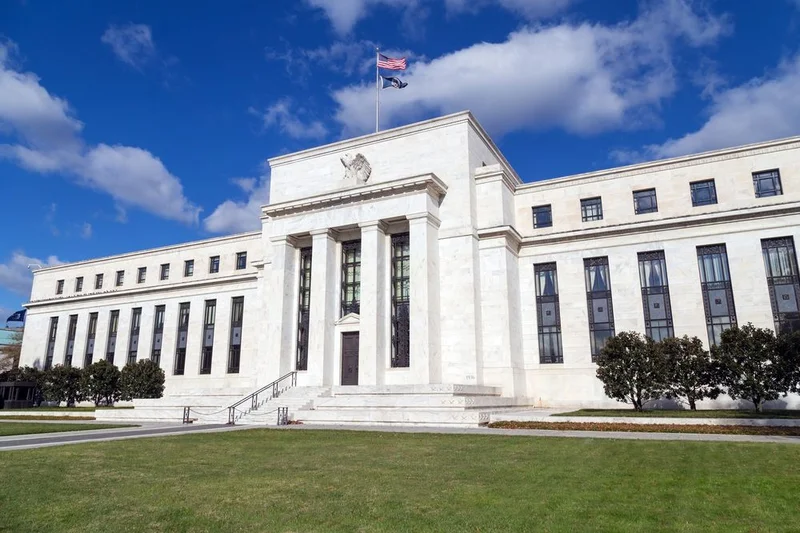Article Directory
The machinery of government is grinding to a halt, and with it, the flow of capital to 1.3 million U.S. service members. As of late October 2025, with the shutdown entering its fourth week, the Treasury Secretary has given assurances for the October 31st payday. But the next one, November 15th, is a gaping question mark. This isn't a political analysis; it's a financial one. A predictable, recurring political failure has created a predictable, recurring liquidity crisis for a captive demographic.
Into this breach step the financial institutions, most notably Navy Federal Credit Union and USAA. They are positioned not merely as banks, but as saviors, offering a lifeline to members whose primary source of income has been turned off by a switch in Washington D.C. They are offering zero-interest loans, a paycheck assistance program designed to bridge the gap. It's an admirable response and a public relations masterstroke. But my job is to look past the press release and analyze the mechanics of the machine. And when you look closely, this isn't just a rescue operation. It's a calculated financial maneuver.
The Anatomy of a Lifeline
Let's dissect Navy Federal’s offer. The credit union is providing zero-interest, no-fee loans to members with established direct deposits whose pay is affected. The loan amount has been increased to a maximum of $10,000, up from an initial cap of $6,000. It’s a significant sum, designed to cover expenses for a family for at least a few weeks. The key, however, lies in the qualification criteria and the repayment structure.
The loan amount is determined by the member’s most recent direct deposit amount before the shutdown. This isn't an arbitrary number; it’s a data point. It allows Navy Federal to quantify its risk precisely. They aren't lending into a void; they are advancing funds against a known, reliable, and government-backed income stream that has been temporarily interrupted. Repayment is just as clean: once the government reopens and back pay is issued, the loan amount is automatically debited. It’s less a loan and more of a collateralized advance.
I've looked at hundreds of loan products, and the most telling detail here is the absence of a credit check. This signals that the lender's confidence isn't in the individual borrower's creditworthiness, but in the U.S. government's ultimate ability to make good on its payroll obligations. The service member is merely a pass-through vehicle for the transaction. Navy Federal is underwriting the certainty of government back pay, not the financial discipline of a soldier or sailor. It’s a very low-risk bet for the institution, one that generates immense goodwill and reinforces member loyalty—an intangible asset with very tangible long-term value.

This entire apparatus is like a sophisticated financial pontoon bridge, hastily assembled to span a river of political dysfunction. It can get you across, but it has strict weight limits (the loan caps), a rigid schedule (you must enroll the day before payday), and its very existence is predicated on the assumption that the ground on the other side won't have collapsed by the time you get there. What happens to the service member who gets out of the military during the shutdown? Does their back pay still arrive in the same manner? The details on these edge cases remain scarce, but they represent the real, albeit small, risk in the portfolio.
A System Under Stress
While Navy Federal was rolling out its assistance program, it was simultaneously grappling with its own internal stress test. On a Saturday morning, as members were likely scrambling to assess their financial situations, the credit union’s online and mobile banking platforms went down. According to outage-tracker Downdetector, reports surged shortly before 2 a.m. ET—about 1:44 a.m. to be more exact—with the vast majority of complaints (72%) related to mobile logins.
The timing is, to put it mildly, suboptimal. Offering a digital lifeline is meaningless if the digital front door is locked. Navy Federal attributed the outage to scheduled maintenance, but for the end-user frantically trying to confirm their financial standing in the dead of night, the distinction is academic. It highlights a critical vulnerability: the very infrastructure meant to deliver these elegant financial solutions is itself fragile. How can you reassure a nervous customer base when they can't even access their accounts?
This isn't an isolated phenomenon. As Government shutdown assistance has expanded for those worried about their next paycheck, other institutions like USAA, Bank of America, and Chase are offering their own versions of shutdown assistance. USAA’s program is slightly different, requiring credit approval, which suggests a marginally different risk calculation. PayPal is even offering small cash advances up to $500. This patchwork of private-sector solutions creates a complex ecosystem for federal employees to navigate. Which program is best? What are the hidden terms? Does applying for one impact eligibility for another?
The existence of a "Shutdown Assistance Map" from MyFEDBenefits tells you everything you need to know. We now need interactive maps and third-party guides to navigate the financial fallout of a legislative impasse. This isn't a sign of a robust system adapting; it's the sign of a failing one being propped up by ad-hoc, temporary fixes. These programs are the financial equivalent of handing out buckets on the Titanic. They are immensely helpful to the people who get them, but they do absolutely nothing to address the iceberg.
A Brilliant Solution to the Wrong Problem
Let's be clear: these assistance programs are a net good. They will prevent thousands of families from facing immediate financial ruin. But we must analyze them for what they are: a high-gloss corporate response to a failure of public governance. The programs are designed with surgical precision to minimize risk for the financial institutions while maximizing brand loyalty. They are advancing capital against a near-certain government payout, effectively using the full faith and credit of the U.S. Treasury as their ultimate collateral. The banks aren't taking the risk; their members are living it. The real story isn't that banks are stepping up. The real story is that they have to.

